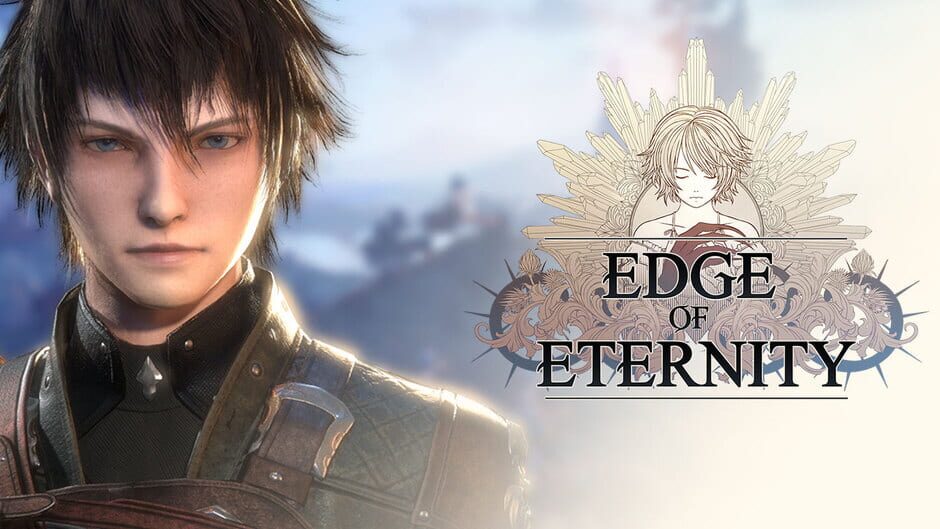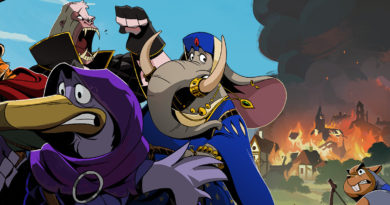Edge of Eternity Review (PS5) – On The Precipice of Greatness
RPGs are a tough nut to crack even for studios with a wealth of resources, manpower and marketing bigwigs behind them. You need only look at polarizing behemoth Final Fanasty XIII and the furore its direction took to see how attempting to diversify the formula can lead to significant backlash. Bursting with a multitude of mechanics and systems to engross yourself in, Edge of Eternity was a game I found myself invested in pretty quickly. The opening hours are a bit too slow to kick into gear and the story never quite hits its stride, but the important part of wanting to play is definitely there.
With stellar RPG releases in the shape of Scarlet Nexus and Tales of Arise hitting consoles last year, it’s a genre with a strong pedigree that can be difficult to make an impact on, especially for a smaller indie team with a lower budget. Edge of Eternity falls into this category, with a potentially over-ambitious vision being lagged down by stuttering performance and a host of visual oddities that can break the immersive atmosphere the fantastic visual direction achieves.
My review is therefore going to reflect this concoction of both impressive achievements and underwhelming elements, but it’s fair to say I’ve had a good time with Edge of Eternity, so it’s worth exploring more of this fantasy realm to discover if it’ll be for you.
Crippling Corrosion
Any RPG worth its salt is based off the foundation of a great story which pulls you through its world. In this area, Edge of Eternity is some light seasoning – enough to whet the tongue but not in enough quality to raise the appeal of the dish. Our primary leads are Daryon, a young yet already war-torn deserting soldier, and a Selene, an optimistic and believably positive mage. Their relationship as siblings is fleshed out pretty well and has some nice moments that create a solid bond to their plight.
And what a plight they face. The world of Heryon is under siege from an alien force known as the Archelites, robotic foes that are effectively trashing the human military Daryon was a part of. The opening is pretty strong and sets a pretty dire situation for Daryon in particular, so the stakes are established well in the early portion.
Unfortunately, as you progress through Heryon and spend more time with more characters, things start to fall apart a bit. Side characters are far less interesting than our core duo and the voice acting for mostly everything is uniformly bad. Not so bad it’s embarrassing, but just bad enough it had me wincing and losing interest. Some cutscenes and dialogue are quite over-written, with the same plot point explained about 3 times before it’ll actually move on (looking at you, dynamic duo’s mother), but it luckily never descends into being terrible, just not particularly engrossing.
Most of the story beats are taken from other well-trodden narrative tropes so there’s little that will surprise you, but I did ultimately enjoy following Daryon and Selene on their quest to save their mother from the corrosion – a corruptive force slowly eliminating humans, akin to a bio-weapon. I would have liked to see a bit more of a dive into the battle trauma themes it touches on but it tended to slide past this. Much of the dialogue is also delivered via text and static interactions, with some noticeable translation issues in the subtitles too, which didn’t help.
Side quests won’t offer much narratively either – most are uninteresting fetch quests from characters you’ll never interact with more than a couple of times. There are a small number of multi-layered side-quests with returning NPCs, but even these feel like one fetch quest broken up into multiple numbers. The Witcher 3 this certainly isn’t. One exception is with a quest for opening a very specific, mystical chest, whereby an NPC will bargain with you about whether your “addiction” to curiosity is worth the price. It had me laughing quite a bit and was a highlight in an otherwise functional yet uninspired offering of side content.

ATBs For Days
While the story didn’t overly impress me, Edge of Eternity’s gameplay and combat systems absolutely did. My earlier FFXIII example wasn’t just a random pluck out of thin air – Edge of Eternity felt like a nostalgic hit of 2009 life for me. Combat is triggered from set events or from bumping into enemies in the world – a bit like in Pokemon or FF7 Remake. It’s largely avoidable too, should you not wish to bother, as enemies have very poor perception to engage you.
In my case however, I was more than happy to oblige with trading blows. Combat is a hybrid of turn-based action and fluid ATB actions. During a fight, your character’s ATB (think energy/stamina) bar fills at the same time as your opponents. Everything from moving, to attacking, to casting or even defending costs ATB usage, but at differing expense. You may be ready to cast an incredibly powerful spell that can wipe out your foe, only to see that their ATB bar will before your second casting bar will, meaning they can disrupt your spell and expose you. What do you do? Well, you adopt a defensive posture, take the blow, then cast your spell when the enemies ATB is lower.
It becomes a terrifically fun game of tit-for-tat as you predict the oppositions moves to either hit them hard enough early on to eliminate them before they move, or disrupt them from getting up to peak damage. Interrupting a spell or discovering a weakness to an element to exploit kept me engaged for hours and with such a constantly growing roster of foes to face, I always had more things to be thinking about or discovering. Their are numerous elemental statuses you can inflict or suffer from and even the time/weather will alter the impact of different elemental powers.
From battling common fodder beasts, to humans, huge towering boar-like creatures, mythical antelope… things, robotic archelites, husk-akin humanoid creeps (think Mass Effect 2/3), there’s a treasure trove of enemies to face on your travels through Heryon, which is great. Facing off against fewer or lower-to-same levelled enemies however could become an exercise of mundanely hitting attack without much thought, as on Normal your HP and MP regenerate after each fight, so with no real threat to face there’s no incentive to battle inefficiently.
Boss battles and squaring up to higher powered enemies is where the combat truly shines and will provide that satisfying challenge to overcome, as you test out different strategies and are forced to switch up tactics. Whether it be an enemy spawning whipping tentacles out of the ground, a tanky soldier weathering hits while a caster blows your party away with spells or surviving an onslaught of husks using ballistae and turrets, Edge of Eternity has enough to variety and battle setups to maintain its combat system effectively. Provided the enemy group isn’t a pushover, in which case it can be too easy to autopilot.
Gameplay will always be the most important of any game for me, which serves Edge of Eternity well, as the act of fighting challenging foes is a puzzle I liked solving. If you’ve never been keen on ATB style turn-based action however, Edge of Eternity won’t be one for your wheelhouse.
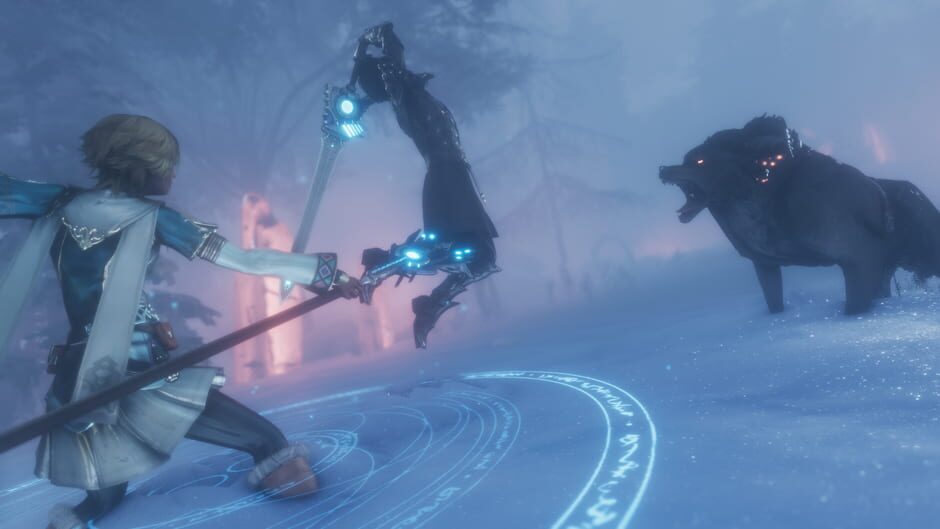
Set Yourself Free On The World
Outside of smacking around helpless beasts like a sadistic fantastical prick, you can wander around the expansive landscape of Heryon to complete side quests, solve puzzle monuments, find chests and materials, or just absorb the gorgeous aesthetic. As mentioned before, many of the planes will have creatures roaming around you can easily navigate around, which I like, as it means you can combat at your own behest instead of being burdened with boring fights endlessly when you just want to explore.
There’s a variety of plants, minerals and items to acquire through exploration, which then allow you to engage with the frankly ludicrous number of systems available at towns or hub areas. Crafting for weapons and armour, vendors selling dozens of varieties of items, upgrading for weapons for each party member, it’s all here and accounted for. At times, the forks in the road collide in hindrance of each other – rarer items can be crafted with ease by just purchasing the rarest materials from the vendor next door, requiring less from the player to go out and earn the reward, undermining the achievement when you deck out your party with high-powered equipment, for example.
However, despite this, I was blown away by just how much there is to engage with in Edge of Eternity. Wanna make Daryon a beast of warfare? Set up your crystals to maximise haste and HP, while equipping a high-powered sword with an ability to give him intermittent shielding from damage. If that doesn’t work, craft a different subset of weapons and armour by purchasing crafting recipes from a vendor. None of this was especially new, but just the sheer amount of options afforded to me at each town became overwhelming and impressive in equal measure. At times, you may be tempted to just think “screw it, it’s too much”, but at others I was spending 20 minutes crafting, buying, sorting, maximising and theorising for my most effective output.
Completing puzzle areas and side quests will additionally reward you with higher-levelled gear and crystals, the upgrading resource. Again, similar to FFXIII or FF7 Remake with materia, crystals act as incremental increases to stats, while unique ones offer abilities for you to utilise in combat, depending on which party member equips them. You can only have so many equipped at once, so you have important decisions to make on how to efficiently beef up your squad, while also contending which abilities or spells they’ll have access to in-battle. As crystals are tied to weapons, you need to level up the weapon through battle to unlock longer and more varied pathways to attach more crystals (and therefore abilities) to a character.
It did occasionally bog down the experience through having to navigate menus often, but it felt more than worth it for the benefit of experimenting with builds. Puzzle areas are a bit less impressive in design and became more draining than anything else, while the abundance of fetch-quest offerings became demotivating the more I accepted hunts and NPC tasks. The open world feels alive, especially as you discover more massive expanses, but what you’re tasked with doing within it feels devoid of soul at times.
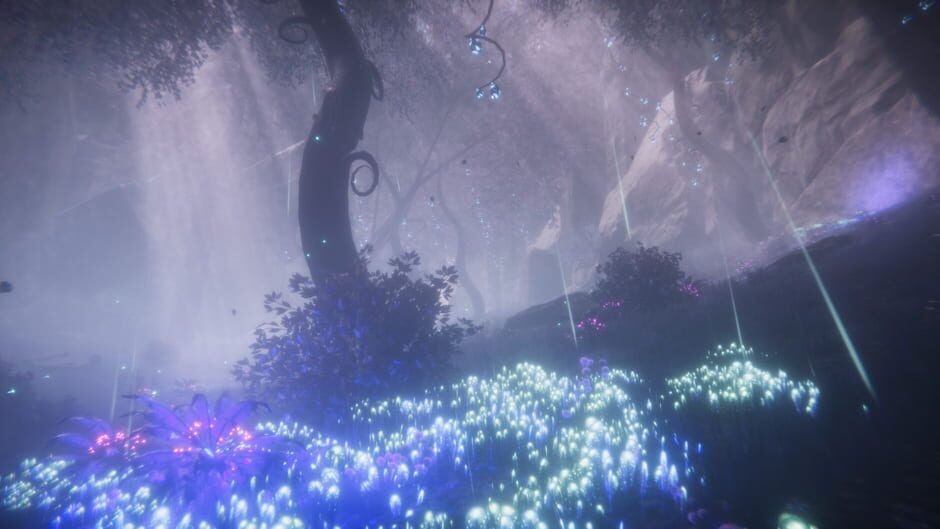
Heryon, The Grandiose Beauty
When I say that the world of Edge of Eternity feels alive, I mean this in the highest compliment for the concept artists, visual technicians and level designers. The aesthetics and art direction of the game are phenomenal. On your journey, you’ll wade through lush open fields, trudge through murky, suffocating marshlands, escape the encroaching corrosion, battle through snow-swept peaks and gaze in awe at the grandeur of castles and looming monuments.
The creative spark on display was truly mesmorising and enraptured the feel of this world impeccably. Too many games either fail to use any sort of colour palette outside of bland or in-your-face brightness, but Edge of Eternity nails a sweet spot of each locale feeling distinct with strikingly defined areas mixed with vibrant colour and grounded use of art direction. While I may have tired of the story, I never tired of emerging into a new zone to discover what visual wonders the concept artists had brought to life.
Despite having said all of that however, my largest regret was that Edge of Eternity clearly didn’t have the funding to bring everything else up to the same level. Animations are largely blocky, whether it be traversing the world with an almost constant and pervasive framerate stutter, noticeable object and texture pop-in occurring barely a few meters in front of your avatar or the in-battle animations lacking a sense of power and impact, almost everything shows the limitations that were brought from potentially being over-ambitious with their vision. It’s commendable that even despite the plethora of issues, visual oddities and lack of polygonal prowess I was still able to be so immersed in the world.
Character models, particularly for NPCs, are really poor and repeat ad-infinum in town or city areas, which can really break immersion in cutscenes or during gameplay. The lack of texture quality takes a toll too, as most look like wax-dolls with few defining features. Were it not for different coloured clothing, you’d be hard-pressed to recognise any character just from their model alone. Cracks also show in other areas, like for example when resting at an inn – there are “scenes” between characters all around a table and yet, all you’ll see is their characters staring blankly at each other while text overlay shows their conversation. It looks awkward and was a clear half-measure (though an understandable one). Something that was obviously wanted for inclusion, but not important enough to warrant more time.
Like I said though, even despite all of the poor optimisation and at times lackluster presentation, the actual look and feel of Edge of Eternity was incredible. Normally these issues would decimate my immersion in a game, but in this one, the art direction was simply too stellar to let go of my attention and the developers deserve huge kudos for making a world so unyieldingly large look so beautiful in spite of their resources.
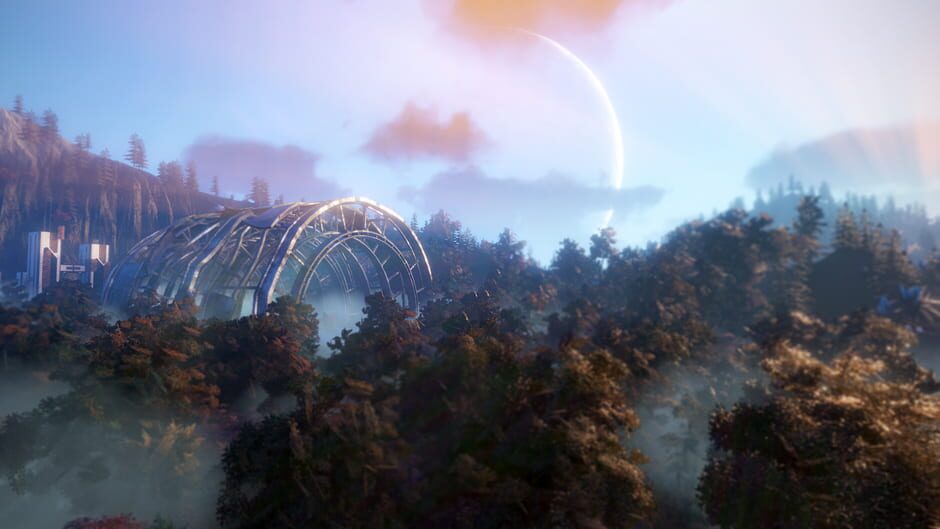
Stepping Back From The Edge
When all was said and done, I reflected on my time with Edge of Eternity more fondly than negatively. This was a small team who took on a huge project and who saw their vision to completion, burgeoning systems and all. All too frequently you’ll stumble on the shortcuts and compromises that were made to stuff everything they wanted into the game, logic be damned, but there’s something about the earnestness of it that almost demands a certain level of respect and appreciation.
Context is everything for me and in the context of the tiny group of people who built this game, I firmly believe it’s worth playing if you’re an RPG fan. It riffs a lot from the already well-established genre and attempts to shovel almost every conceivable element into one over-flowing package. At times you’ll see this bursting away at the seams, but then we’ve all over-indulged in our dreams at times, so who am I to judge?
It’s not a perfect or even a great game, but Edge of Eternity shows what can be done by a group of inspired game designers who had a vision they were willing to trust. Overlook its numerous flaws and financial limitations and you’ll find a package filled with dozens of hours of janky, whole-hearted fun. At £25 and offering dozens of hours of gameplay, it’s a model for generous and honest game design, something which is far too rare in the current AAA space. Plus, it’s gorgeous too. If nothing else, your eyeballs will thank you for giving them the chance to gaze upon the artwork brought to life.
Edge of Eternity is a passion project with a hell of a lot of heart. The art direction is phenomenal, the combat satisfying and the content positively bursting with hours of enjoyment. Poor performance, less interesting side content and a mediocre story keep it from greatness, but the heart of this package deserves its praise and to be revered into the future.

Edge of Eternity is available now on PS5 (review platform), PC and Mac, Nintendo Switch, PS4, Xbox One and Xbox Series S|X consoles.
Developer: Midgar Studio
Publisher: Dear Villagers / Plug In Digital / Maple Whispering
Disclaimer: In order to complete this review, we were provided with a promotional copy of the game. For our full review policy, please go here.
If you enjoyed this article or any more of our content, please consider our Patreon.
Make sure to follow Finger Guns on our social channels –Twitter, Facebook, Twitch, Spotify or Apple Podcasts – to keep up to date on our news, reviews and features.
